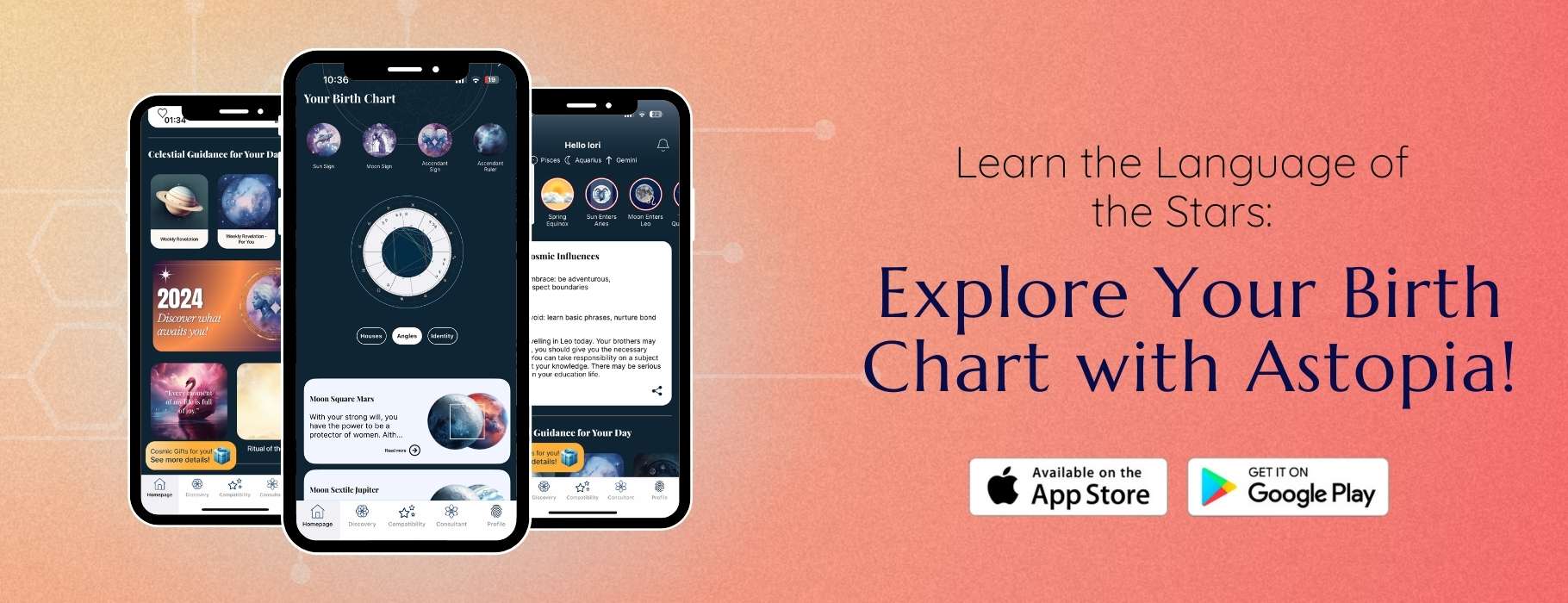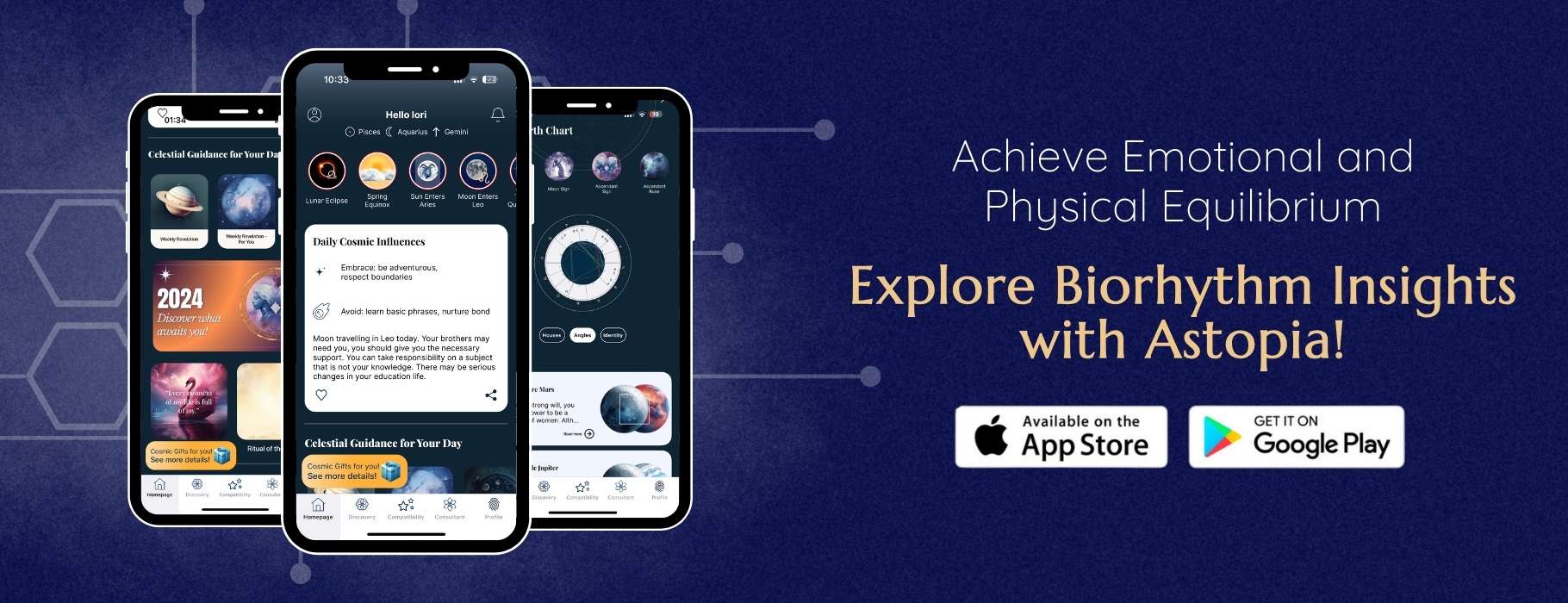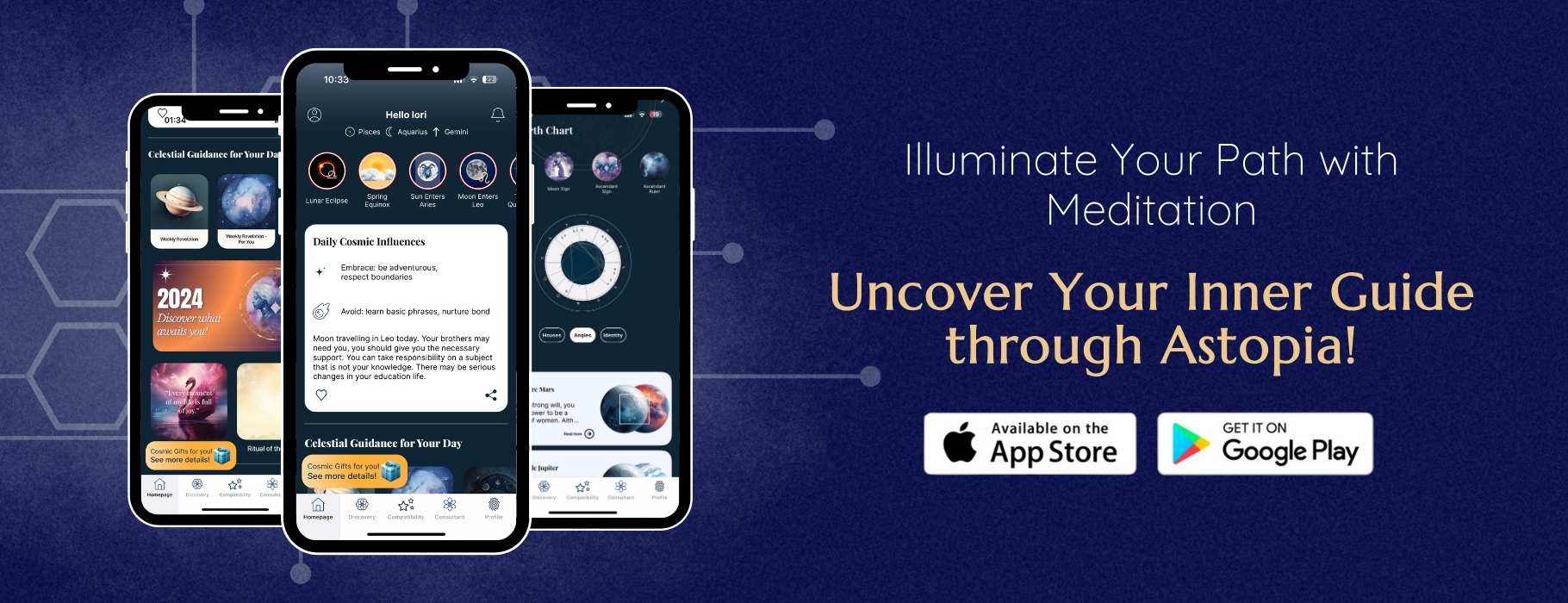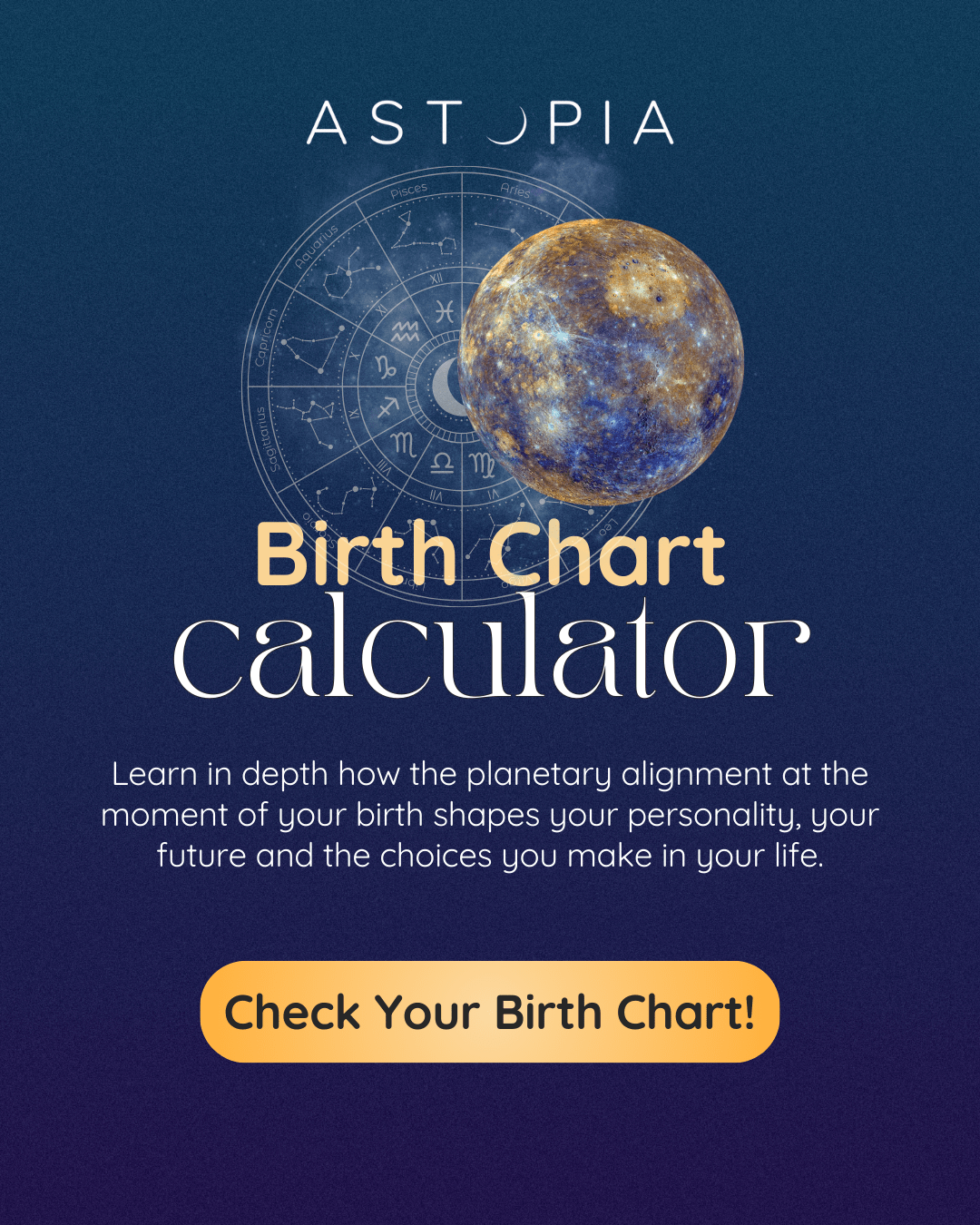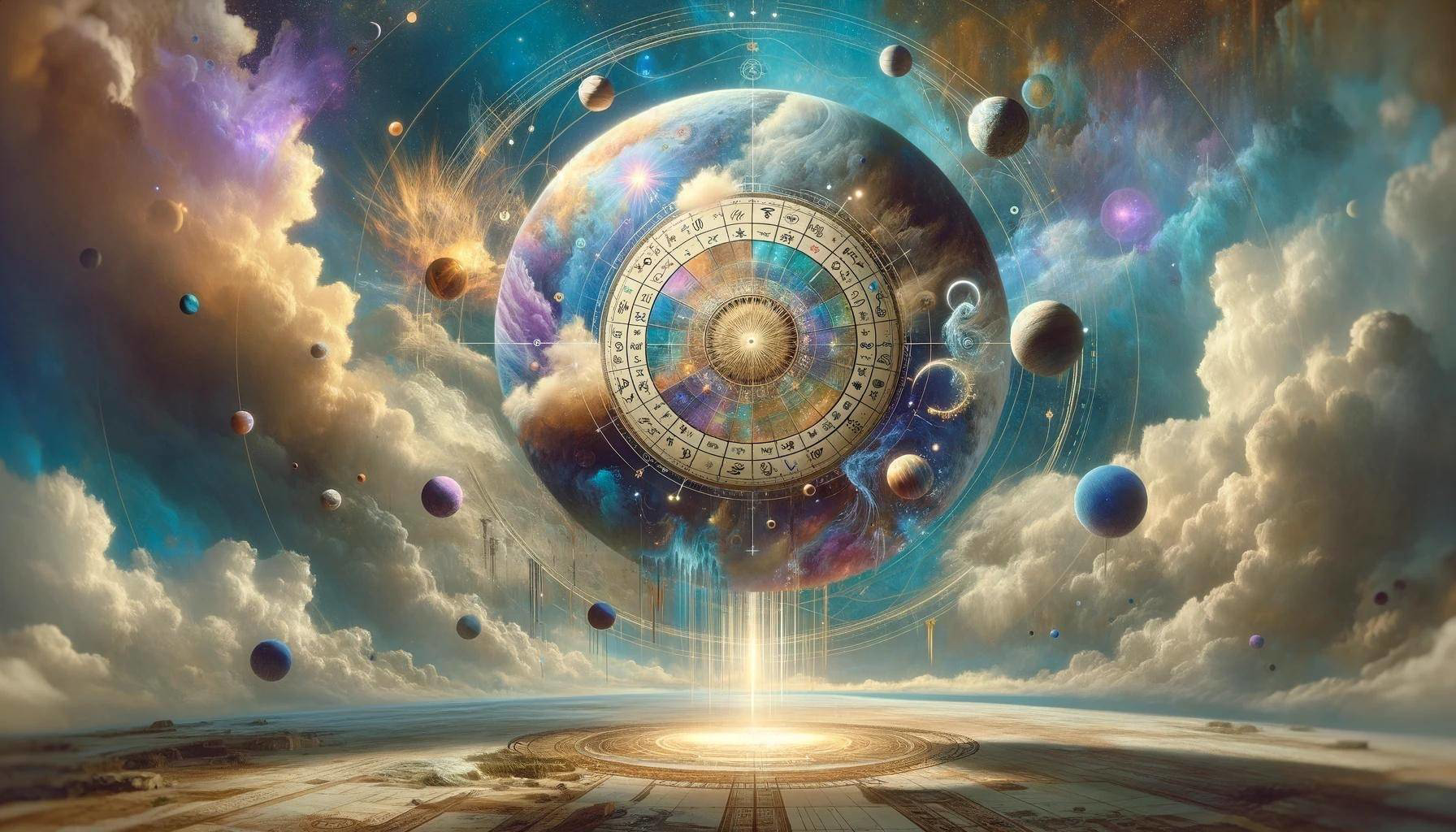
5/9/2024
Author: Astopia TeamBirth Chart in Vedic Astrology
Vedic astrology is an ancient wisdom system originating from India. This traditional approach explores the deep connections between universal energies and the positions of the stars and uses this information to shape people's destinies. Vedic astrology produces a "natal chart" based on the positions of planets and stars in the sky at the time of an individual's birth. This map is used to analyze an individual's character, destiny, challenges and opportunities.
The natal chart is a critical tool in understanding the physical, emotional and spiritual aspects of a person's life. Each planet represents a different sphere of life; Sun; personality and self, Moon; mind and emotions, Mars; such as energy and courage. Vedic astrology makes detailed predictions based on the positions of these planets and signs at the time of birth.
In this system, the natal chart also provides a basis for exploring the four purposes of life: dharma (life purpose), artha (resources and achievement), kama (desires and relationships), and moksha (spiritual liberation and enlightenment). The map shows how a person can best fulfill these four purposes, so that the individual begins to understand his place both in this life and in universal cycles.
In particular, the natal chart reveals the strengths and weaknesses of the individual, determines the most suitable career paths, their proneness to health problems and the main issues they may encounter in relationships. Therefore, vedic astrology and birth chart study helps the individual develop a deep awareness of his or her inner world and find answers to complex life questions. Vedic astrology not only makes future predictions, but also provides the individual with the tools needed to live a more balanced, harmonious and meaningful life.
This ancient wisdom remains a valuable resource for personal development and spiritual growth as it continues to guide individuals in today's world of rapid change.
Start discovering the basis of Vedic astrology with the guidance of Astopia!
How to Create a Birth Chart?
Techniques Used in Vedic Astrology and Steps to Create a Birth Chart
Vedic astrology is based on an individual's date, time and place of birth when creating a natal chart. These three main pieces of information are vital in drawing the natal chart correctly because the locations of the planets and stars vary depending on these elements. Here is the process of creating a birth chart in Vedic astrology:
Collection of Birth Information:
An accurate horoscope calculation is necessary for a detailed analysis of the birth chart. The first step in creating a birth chart is to collect the exact coordinates of the date, time and place of birth of the person. This information is used to determine the current positions of planets and stars. Precision of birth time is critical, especially with factors that change rapidly over time, such as the Ascendant Sign.
Calculating Planet Positions:
In Vedic astrology, the process of star chart calculation is used to determine the planetary positions at the time of one's birth. With the information collected, the exact positions of the planets and lunar nodes (Rahu and Ketu) at the time of birth are calculated using an astrology software or panchang (Vedic calendar). These positions are expressed in a 360-degree system on the zodiac wheel.
Map Drawing:
Once the positions of the planets are determined, this information is displayed on a chart. In Vedic astrology, North Indian or South Indian style natal charts are generally used. These maps visually represent the locations of planets and stars within the zodiac and their geometric relationships (aspects) with each other.
Determination of Houses:
The natal chart consists of 12 houses representing the zodiac signs. Each house represents a different aspect of life. The ascendant begins in the first house and the chart is arranged counterclockwise from that point. Each house is thought to govern a specific area in an individual's life, for example, the 1st house of personality and physical health, and the 7th house of marriage and partnerships.
Dasha and Transits:
Once the chart is drawn, important periods in the person's life cycle and the events expected during these periods are interpreted using more advanced techniques such as Dashas (major planetary cycles) and transits (transitions of planets). This analysis is used to predict important transitions and potential changes in a person's life.
Interpretation:
Star chart calculation is a critical step in understanding one's life path in Vedic astrology. The final step is to bring all this information together and interpret it. By evaluating the combination of planetary positions, house placements and current transits, an astrologer provides detailed information about an individual's personality traits, life path and challenges they may face. This interpretation allows the individual to better understand himself and make informed decisions about dealing with challenges in his life.
Creating a natal chart in Vedic astrology involves not only the mathematical positions of the planets but also the spiritual and karmic meanings of these planets. Therefore, birth chart analysis is considered as a comprehensive guide that sheds light on the development of the individual at both material and spiritual levels.
Basic Components in Vedic Birth Chart
Meanings of Planets, Houses and Ascendant Signs in Vedic Astrology
Vedic astrology bases its interpretation of the natal chart on planets, houses and ascendant signs. Each represents different aspects and potentials in an individual's life. Here are the roles and meanings of these basic components in vedic astrology:
Planets:
With an accurate star chart calculation, the positions of the planets in the zodiac are determined and this information is used to analyze the person's character. In Vedic astrology, planets are viewed as cosmic forces that influence an individual's psychological characteristics, abilities, and life events. Each planet carries certain qualities and energies:
- Sun (Surya): Represents power, authority, spiritual consciousness and relations with the father.
- Moon (Chandra): Symbolizes emotions, mind, motherhood and inner peace.
- Mars (Mangal): Rules courage, war, energy, fighting and competition.
- Mercury (Buddha): Associated with communication, intelligence, education and learning ability.
- Jupiter (Guru): Represents wisdom, growth, abundance and spiritual beliefs.
- Venus (Shukra): It is linked to love, beauty, art, relationships and comfort areas.
- Saturn (Shani): Associated with discipline, time, restrictions, difficulties and old age.
- Rahu (North Lunar Node): Associated with karmic tasks, addictions, illusions and sudden changes.
- Ketu (South Node): Associated with spirituality, letting go of past lives, and inner enlightenment.
Houses:
The 12 houses in the natal chart represent different areas of life, and each house is ruled by a planet. The meaning of each of these houses is as follows:
- 1st House: Personality, body, life path and general health.
- 2nd House: Finances, values, speech and family.
- 3rd House: Siblings, communication, short trips and courage.
- 4th House: Home, family, motherhood and emotional foundations.
- 5th House: Children, creativity, love and education.
- 6th House: Health problems, enemies, debts and service.
- 7th House: Marriage, partnerships and open hostilities.
- 8th House: Death, transformation, inheritance and secret matters.
- 9th House: Luck, spirituality, higher education and distant travels.
- 10th House: Career, public image and achievements.
- 11th House: Gains, desires, friends and community.
- 12th House: Losses, loneliness, inner realizations and spiritual retreats.
Rising Sign:
The ascendant sign is the sign that rises on the eastern horizon in the natal chart and points to the first house of the chart. It represents a person's life, physical appearance, initial energy and personal approach. Accuracy of birth time is very important here as the ascendant sign is based on precise timing at the time of birth.
Each of these basic components is used in Vedic astrology to understand an individual's character, potential and life trajectory. The combination of planets, houses and ascendant sign draws a complex and detailed life map. This map provides valuable insights into the opportunities, challenges and periods of transformation that a person will face in his life, thus helping the individual live a more conscious and harmonious life.
Interpretation of Birth Chart in Vedic Astrology
Planetary Settlements and Their Effects on Our Lives
In Vedic astrology, interpretation of the birth chart plays a critical role in understanding the dynamics that shape an individual's life. This interpretation involves analyzing the complex relationships of planets and houses. Each planet and its position in the chart are examined for specific themes and influences specific to the individual's life. Here are the placements of the planets and their main effects on our lives:
Sun:
The Sun represents personal identity, individual power and authority. Charts where the Sun is strong indicate leadership qualities, self-confidence and high status. However, difficult aspects or weak positions can bring about ego conflicts, authority issues and father-related difficulties.
Moon:
The Moon reflects our emotional world, our inner peace and our relationship with our mother. The strong position of the Moon in the chart means emotional intelligence and strong inner intuition. Its weak position may cause emotional instability and family problems.
Mars:
Mars shows our courage, energy and capacity for struggle. While a positive Mars in the chart provides assertiveness and high energy levels, its negative aspects can lead to aggressive behavior, impatience and conflicts.
Mercury:
Mercury, which governs communication, logic and learning ability, affects social skills and academic achievements. A strong Mercury indicates that you are a good speaker and an intelligent individual. Weak Mercury may indicate communication problems and disagreements.
Jupiter:
Jupiter, the planet of wisdom, expansion and optimism, is associated with abundance and spiritual growth. While a strong Jupiter brings luck and success, a weak Jupiter can lead to problems of overdoing and lack of discipline.
Venus:
Venus is the planet of love, beauty and harmony. A strong Venus offers good relationships and artistic talents, while a weak Venus can create relational difficulties and financial troubles.
Saturn:
Saturn, the planet of discipline and restrictions, symbolizes the difficulties and lessons in our lives. While a strong Saturn brings endurance and a sense of responsibility, a weak Saturn can bring long-term difficulties and pessimism.
Rahu and Ketu:
Rahu and Ketu, the karmic nodes, represent deep karmic issues that affect our spiritual growth and evolution. Rahu rules worldly desires and addictions, while Ketu rules spiritual letting go and past life karma.
During the interpretation of the natal chart, the houses in which these planets are located, their angles with each other and their movements during transit periods are examined in detail. The interaction of each planet and house determines the timing and nature of certain events and experiences in an individual's life. This information, through Vedic astrology, helps the individual overcome difficulties in his life, maximize his potential and progress on his own personal development journey. These interpretations provide personalized guidance and understanding to the individual, allowing them to make more informed decisions and improve their quality of life.
Special Methods and Applications
Special Methods Used in Vedic Astrology and Birth Chart Interpretation Techniques
Vedic astrology is known for its rich and diverse interpretation techniques. These techniques analyze an individual's birth chart in depth and provide detailed information about various aspects of life. Here are some special methods used in Vedic astrology:
Dasha Systems:
Dasha systems are used to determine important periods in a person's life. Dasha is a period of time when a planet represents the dominant energy for a certain period of time. These periods foresee times when important events and transformations will occur in the individual's life. The most widely used dasha system is "Vimshottari Dasha", in which the effects of each planet on various stages of life are examined in detail.
Gochar (Transitler):
Gochar, or transits, examines the interactions of planets as they move across the sky, relative to their original positions in the natal chart. These transits are used when making daily or long-term predictions and play a critical role in determining important events that may occur in an individual's life.
Yogas:
Yoga consists of certain configurations of two or more planets, and these configurations show special strong or weak influences in the natal chart. For example, "Gajakesari Yoga" occurs when the Moon and Jupiter are in a particular position and is associated with abundance and intelligence.
Ashtakavarga Systems:
Ashtakavarga is a complex system that calculates the points each planet receives from other points in the chart. This technique evaluates the strength of a particular planet in the chart and the influence of that planet on various areas of life.
Nakshatra (Enlightened Stars):
The luminous star (Nakshatra) of each planet and moon is examined to reveal deeper personality traits and potentials. Nakshatras are used to better understand the nature, tendencies and destiny of the individual.
Contribution of Vedic Astrology to the Individual's Journey of Self-Discovery through Birth Chart Interpretation
The in-depth interpretations and analyzes provided by Vedic astrology serve as an important guide on the individual's journey of self-discovery. The natal chart illuminates a person's strengths and weaknesses, karmic lessons, and areas of potential growth. This information provides the individual with the opportunity to better understand their own internal motivations, emotional reactions and behavioral patterns. Thus, the individual can make more appropriate life choices, cope with difficulties more consciously, and progress on the path of personal development.
Vedic astrology is a powerful tool that can be used in the journey of personal development and spiritual growth. Armed with this knowledge, individuals become more active creators of their lives and gain the power to shape their own lives in a more harmonious and meaningful way. This deep information and guidance offered by astrology supports personal transformation and awareness processes and strengthens the individual's bond with the universe.



